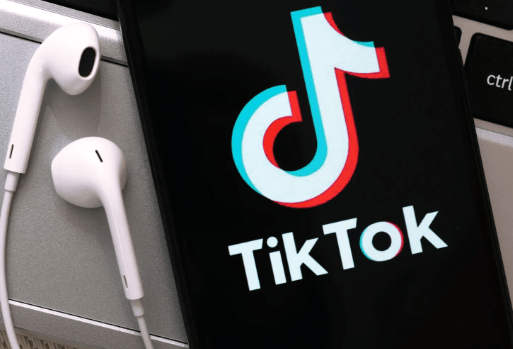how to use Urdu to English translator
Using an Urdu to English translator app can be a convenient way to translate text, phrases, or conversations between the two languages. Here are the general steps to use an Urdu to English translator app:
1. Install the App: First, you’ll need to download and install an Urdu to English translator app from the Google Play Store or Apple App Store. You can do this by searching for “Urdu to English translator” in the search bar and selecting an app with good reviews and ratings.
2. Open the App: Once the app is installed, open it on your device. You will usually find the app icon on your home screen or in the app drawer.
3. Input the Text: Most Urdu to English translator apps have a text input field where you can type or paste the Urdu text you want to translate. Some apps also allow you to input text by speaking into the device’s microphone.
4. Select Translation Direction: After inputting the Urdu text, select the translation direction as Urdu to English. Some apps may automatically detect the input language, while others may require you to manually choose Urdu as the source language and English as the target language.
5. Initiate the Translation: Once you’ve input the text and selected the translation direction, simply tap the “Translate” or “Go” button to initiate the translation process.
6. View the Translation: The app will then display the translated text in English. You can read and review the translated text to ensure it conveys the intended meaning accurately.
7. Additional Features: Some Urdu to English translator apps may offer additional features, such as offline translation, pronunciation assistance, and the ability to save or share translations. Explore these features depending on your specific translation needs.
8. Conversational Translation: If the app supports it, you may also be able to use the app for real-time or conversational translation. This feature is particularly useful for translating spoken conversations, as the app can transcribe and translate spoken words in real time.
9. Refine and Share: If the translation is not accurate or needs refinement, some apps allow you to edit the translated text to correct any errors. Once you’re satisfied with the translation, you can share it via messaging apps, social media, or other communication platforms.
10. Explore Reviews and Ratings: Lastly, consider exploring user reviews and ratings of the app to gauge its reliability and accuracy. This can help you choose a reputable app that meets your translation needs.
Remember that while Urdu to English translator apps can be useful for basic translation needs, they may not always provide perfect translations, especially for complex or nuanced content. For important translations, it’s wise to have a native speaker or professional translator review the translated text to ensure accuracy.
best features
The best Urdu to English translator apps offer a range of features to make the translation process smooth and accurate. Here are some of the key features to look for in a high-quality Urdu to English translator app:
1. Accurate Translation: The app should provide accurate translations of Urdu text into English and vice versa. Look for an app with a strong reputation for language accuracy and reliability.
2. Transliteration Support: Some Urdu words or phrases may be challenging to type in Urdu script, so a good feature to have is support for transliteration, which allows users to type in Roman Urdu and have it translated accurately.
3. Offline Mode: The ability to use the app without an internet connection can be crucial, especially when traveling or in areas with limited connectivity. Look for an app that offers offline translation capabilities.
4. Voice Input and Output: The app should support voice input for both Urdu and English, allowing users to speak phrases or sentences for translation. Additionally, voice output in both languages can be helpful for pronunciation and language learning.
5. Text-to-Speech: A text-to-speech feature that allows users to hear the translated text spoken aloud can aid in language learning and pronunciation.
6. Camera Translation: Some advanced apps offer the ability to translate text from images captured by the device’s camera. This can be useful for translating signs, menus, or other printed material in real time.
7. Phrasebook and Favorites: A built-in phrasebook with common phrases and expressions can be helpful for quick translations. Additionally, the ability to save favorite translations for easy access later is a useful feature.
8. Language Learning Resources: Look for apps that offer additional resources for language learners, such as grammar guides, vocabulary lists, and language exercises.
9. Cross-Platform Sync: If you use the app across multiple devices, having features that allow for synchronization of translations and preferences can enhance the user experience.
10. Pronunciation Guide: An integrated pronunciation guide can help users correctly pronounce translated words and phrases.
11. Contextual Translation: Some apps provide contextual translation, accounting for the context of the input text to produce more accurate and nuanced translations.
12. Multi-Language Support: If you communicate in multiple languages, consider an app that supports translation between Urdu and other languages as well.
13. User-Friendly Interface: A clean and intuitive user interface can make the translation process smoother and more enjoyable.
14. Speed and Reliability: Look for an app that provides quick translation results without sacrificing accuracy or reliability.
15. Feedback and Corrections: The ability to provide feedback on translations and to suggest corrections can help improve the app’s accuracy over time.
16. Privacy and Security: Ensure that the app prioritizes user privacy and data security, especially when handling sensitive or personal information.
When choosing an Urdu to English translator app, consider your specific translation needs and look for an app that offers the features most relevant to you. Reading user reviews and ratings can also provide insights into the real-world performance of the app and help you make an informed decision
Urdu to English translator conclusion
In conclusion, a high-quality Urdu to English translator app should offer accurate translations, support for transliteration, offline mode, voice input and output, text-to-speech, camera translation, phrasebook and favorites, language learning resources, cross-platform sync, pronunciation guide, contextual translation, multi-language support, a user-friendly interface, speed and reliability, feedback and corrections, and prioritize user privacy and data security.
When selecting an Urdu to English translator app, considering your specific translation needs and ensuring that the app offers the features most relevant to you is essential for a smooth translation experience. Additionally, reading user reviews and ratings can provide valuable insights into an app’s real-world performance, aiding in making an informed decision.
Ultimately, the best Urdu to English translator app is one that aligns with your preferences and offers the features necessary to meet your language translation requirements. Keep in mind that staying informed about the latest developments in language translation technology can help you choose the most effective app for your needs.



